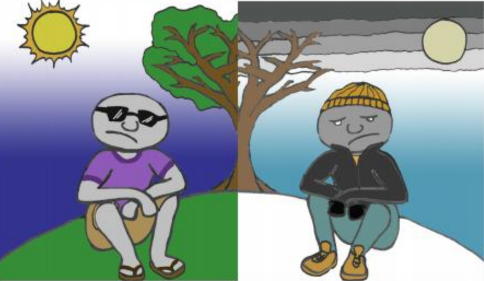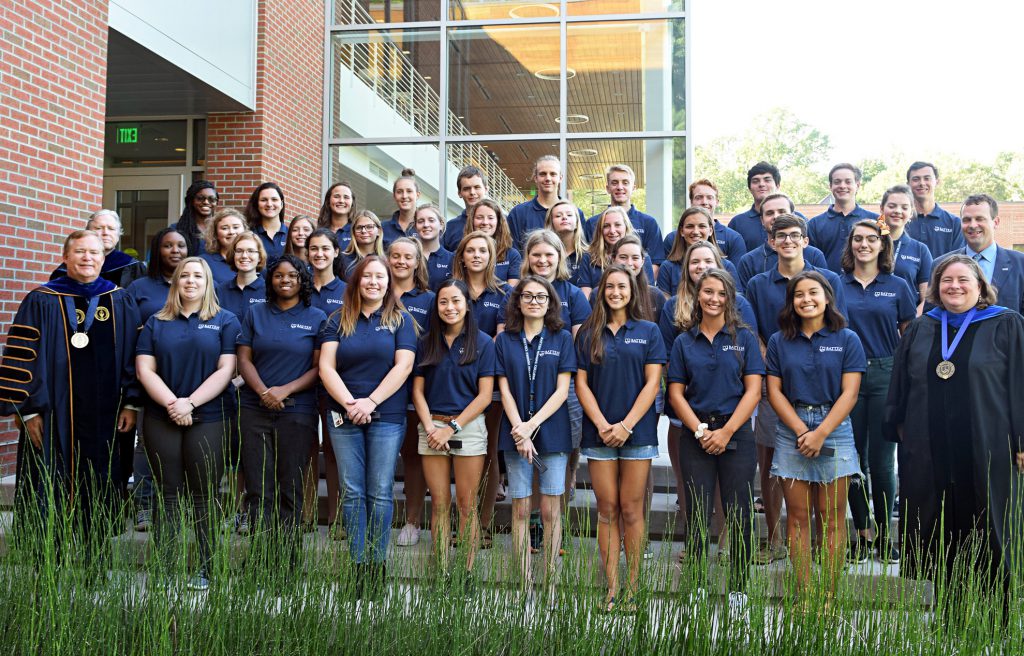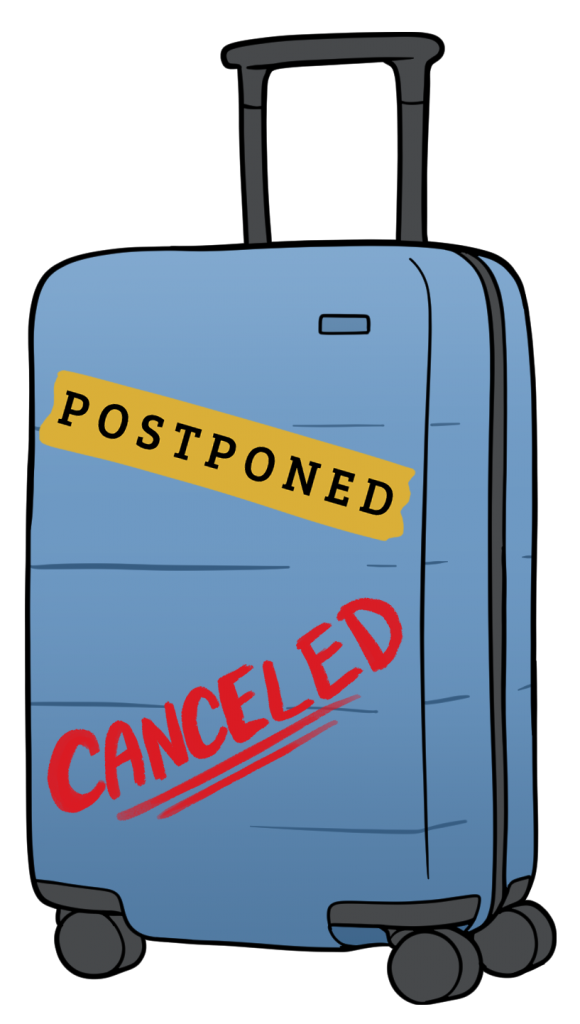Students and counselors discuss Seasonal Affective Disorder (SAD) among college students as the seasons change and warmer weather approaches, potentially ending the symptoms of SAD for those who suffer from the “winter pattern” variety.
Wednesday, March 20, marks the official beginning of spring in the Northern Hemisphere, and plenty of people are excited for the warmer weather that will hopefully accompany its arrival.
However, there are some students whose gratitude is due to more than just an appreciation for the beach. According to the National Institute of Mental Health (NIMH), depression is one of the most common mental disorders affecting young adults, and Seasonal Affective Disorder (SAD) is an increasingly common subset of this.
Seasonal Affective Disorder is a mood disorder characterized by depression, sadness, lethargy or apathy that a person feels at a specific time every year. Most people are affected during fall and winter.
Associate Director of Counseling Services Crista Gambrell described SAD as “any time you experience mood symptoms like sadness or depression-like symptoms based on the season or weather changes” repeatedly over the years. “It’s pretty much depression based on the seasons.”
Director of Counseling Services Bill Brown added that “it tends to repeat itself year after year; people who have it tend to notice a pattern.”
Counseling Services offers a variety of services, from offering a friendly ear to those students who’ve had a bad day to helping students who struggle with specific mental disorders such as SAD. Counseling Services conducted a total of 1529 student sessions in the 2018 academic year, and report that many students have continued to use their services into 2019.
Junior Danielle Davis is working to bring awareness to this disorder. She’s the President of the National Alliance on Mental Illness (NAMI) chapter at Wesleyan. NAMI is a grassroots advocacy group with nationwide chapters, and has expanded since its 1979 founding into the largest mental health advocacy group in the U.S. NAMI meets every Wednesday at five p.m. in Clarke 215 for those who are interested in attending or learning more about mental health.
“We advocate for mental health and we just try to spread awareness and be a support system for those who may suffer from mental illness,” Davis said. Though her organization has covered a range of different disorders, ranging from schizophrenia to general anxiety, she said Seasonal Affective Disorder was personal for many NAMI members.
“There were a couple people in my organization who said that they felt sincerely like they had that issue, because as soon as the cold months roll around, their mood just depletes and they’re ready for it to warm up again,” Davis said.
According to NIMH, symptoms of “winter pattern” of SAD may include a recurring sense of having low or no energy; hypersomnia or excessive sleepiness during the day; episodes of overeating or weight gain; a craving for carbohydrates; and social withdrawal or the urge to “hibernate.”
Symptoms of “summer pattern” of SAD may include a poor appetite or weight loss; insomnia or the habitual inability to sleep at night; agitation and restlessness; a general feeling of anxiety; and episodes of violent behavior.
Brown said that, “The one thing that’s positive, out of all the negative, is that you can tell yourself that it’s limited. ‘I will come out of this,’ ‘there is light at the end of the tunnel’ because that’s typically the way it works. Once spring hits and the light changes and the weather is picking up and it feels better to be outside, they can sort of count on ‘this depression I’m feeling will go away.’ And I think just being able to tell yourself that is a technique to get out of depression.”
For those who want a more targeted action plan, there are four main types of treatment for SAD: light therapy, medication, psychotherapy and a Vitamin D regimen. It is important to note that the NIMH does not consider the Vitamin D regimen to be an effective treatment, as studies on its effectiveness have produced mixed results.
Gambrell recommends tending to overall mental health in addition to targeted treatments for SAD.
Brown and Gambrell both defer to the World Health Organization’s (WHO) definition of overall mental health: “A state of well-being in which every individual realizes his or her own potential, can cope with the normal stresses of life, can work productively and fruitfully, and is able to make a contribution to her or his community.”
“A lot of time we don’t seek support until stuff starts to break down,” Gambrell said. She mentioned that their goal is to “[promote] the good, rather than repairing what goes wrong,” and that they try to focus on overall wellness.
Gambrell described three basics of overall wellness: sleep hygiene and “getting an adequate amount of restorative sleep”; nutrition and making sure students are eating well-rounded meals more than once per day; and “getting in moderate movement and physical activity.”
“We preach those all the time, but those really are the basics to help you keep a baseline mood,” Gambrell said. If you’re not doing those basic things to take care of your body, a lot of times you’ll experience emotional symptoms like stress and not being able to deal because you’re overwhelmed.” She noted that students struggle with all three basics, sometimes individually and sometimes simultaneously.
Brown said that physical activity is often helpful to people, although many experience an initial reluctance to work out. “I’ve got a number of clients and exercise is their coping mechanism, and it really helps them to function better,” he said.
Davis also made this recommendation. “That not only deals with your mental health but also your physical health, so why not tie both into each other?”
She also suggested writing, which has been her personal “coping method” since high school, and meditating or listening to music to induce a relaxed state.
“Just being knowledgeable of all the different types [of therapy] helps you and other people,” Davis said.
NAMI’s motto is ‘You are not alone,’ a sentiment that Davis and those in Counseling Services emphatically support.
“Having support—whether that’s professional support or just adequate social support— that’s huge for college students. Just finding your people, finding your community of friends or people you can lean on when you’re struggling, just having someone to talk to can be helpful,” Gambrell said.
“You’re not in it alone. There are several people in the world, on this campus, in Virginia who may suffer from the same thing you suffer with,” Davis said. “There’s always someone to talk to. Never give up. I know all these sound cliché, but it’s serious. You’re not in it alone. There’s always someone willing to be that ear to hear, that shoulder for you to lean on. And if you don’t know anyone, I’ll be that person. Just know you’ll always have a friend in me.”
Anyone who feels like they are struggling with a mental illness or wants to learn more about mental health are encouraged to visit Wesleyan’s Counseling Services, located in upstairs Batten, room 211.
Below are a list of important phone numbers for anyone who may need them:
National suicide prevention lifeline: 1-800-273-TALK (8255)
Virginia suicide prevention lifeline: 1-800-SUICIDE (784-2433)
Norfolk depression crisis hotline: 804-819-4100
Mental health crisis hotline: 1-800-442-HOPE (4673)
NAMI helpline: 800-950-NAMI
Call 911 if you or anyone you know is an immediate danger to themselves or others, or a similar emergency arises.
Mickella Rast
mjrast@vwu.edu


